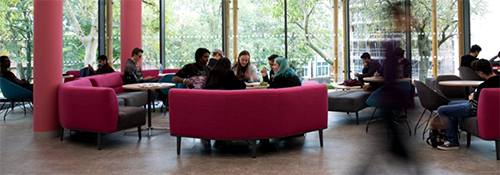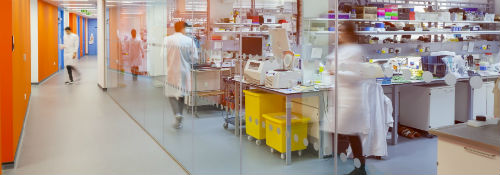Search or browse our Engineering facilities
| Facility | keywords |
|---|---|
Aerodynamics and Aeroacoustics Laboratories
|
Show all;Aerospace Engineering |
Bristol Robotics Laboratory (BRL)
|
Show all;Engineering Maths;Engineering Mathematics;drones; UAVs |
Communications Laboratory
|
Show all;Electrical and Electronic Engineering |
Composites Manufacturing, Test and Characterisation Facilities
|
Show all;ACCIS;Aerospace Engineering |
Computing Resources and High Performance ComputingThe University hosts Bluecrystal Phase 4, one of the fastest and most advanced supercomputing facilities in the UK, capable of up to 600 trillion calculations per second. The Faculty has several locally-managed distributed memory parallel computer clusters, with larger simulations run on a University central resource. For High Performance Computing, the University also hosts the UK's most powerful academic computer cluster. Find out more |
Show all;Computer Science;supercomputing; |
Cyber Security Laboratory
|
Show all;cybersecurity;Computer Science |
Digital Manufacturing LaboratoryFounded in response to the drive towards digital across engineering, the Digital Manufacturing Lab hosts multi-disciplinary teams sitting at the cutting-edge of future design and manufacturing technologies, tools, and systems. Crossing the boundaries between design technologies, digital and rapid manufacture, digital twins, data science, robotics, and metrology systems, the DML aims to produce disruptive knowledge and tools for industry and the general public alike. For example, it hosts one of the UK's few Optomec Aerosol Jet 5X printer. Find out more |
Show all;Mechanical Engineering; design; data science; robotics; |
Dynamics Laboratory and Model Validation Facility (MVF)
|
Show all;Aerospace Engineering;Mechanical Engineering;anechoic chamber |
Earthquake Laboratory
|
Show all;Civil Engineering |
Electrical Engineering Teaching Laboratories
Bigger and newly refurbished electrical teaching laboratory. Fully kitted out with state of the art equipment. Contact: dominic.hardman@bristol.ac.uk (Technical Services Manager) |
Show all;Electrical and Electronic Engineering |
Electrical Energy Management FacilitiesOur electrical and electronic labs and newly-refurbished facilities support research and development in electrical energy management. Examples are the Power Electronics lab, Electrical lab and Electric Drives lab, used to train students in electric vehicle drive trains, energy harvesting, smart grid components, power electronics and machine design. Find out more |
Show all;Electrical and Electronic Engineering |
General Engineering Student Laboratory
Contact: dominic.hardman@bristol.ac.uk (Technical Services Manager) |
Show all;Aerospace Engineering;Civil Engineering;Computer Science;Electrical and Electronic Engineering;Engineering Design;Engineering Maths;Mechanical Engineering |
Geomechanics Laboratories
|
Show all;Civil Engineering |
Hackspace
Contact: hackspace-info@bristol.ac.uk |
Show all;Aerospace Engineering;Civil Engineering;Computer Science;Electrical and Electronic Engineering;Engineering Design;Engineering Maths;Mechanical Engineering |
Heavy and Light Test LaboratoriesOur structures facilities allow for testing a variety of structural forms, from large frames to smaller machines for more standard testing. Our laboratories offer heavy and light test facilities, a 100 tonne capacity frame for pilot testing and a large-scale fatigue testing facility. We offer novel testing solutions to Research, Teaching (projects) and Industrial Partners to investigate new materials and methods. All machines are available to Students to use as part of their project work if required. Find out more |
Show all; Aerospace Engineering;Civil Engineering; Mechanical Engineering |
High Temperature Centre: Creep LaboratoryA temperature-controlled environment, supporting research on metals operating at high temperature. Tests can be run on metals at temperatures up to a thousand degrees centigrade. Within Mechanical Engineering, this Lab is dedicated to the Solid Mechanics Research Group and exploring the 'in service' life of components and material. Novel esearch conducted in the lab helps the relevant authorities make informed decisions around the life of the UK's nuclear facilities. Find out more |
Show all;solid mechanics;nuclear;Mechanical Engineering |
Metallurgy LaboratoryThe metallurgy lab is used for the forensic analysis of metal, ceramic or composite samples generated during research projects. This often involves microscopic analysis of samples to explain behaviour seen during other tests. Examples include diagnosing the fracture mechanism in carbon-fibre composites and how high-temperature deformation changes the structure of power plant steels. |
Show all; |
National Composites Centre (NCC)
|
Show all; Aerospace Engineering |
Non-destructive Testing Laboratory
|
Show all;Mechanical Engineering;ndt |
NSQI Low Noise Laboratories (LNL) and Cleanroom
|
Show all; |
PhotonicsThe University has excellent facilities for this field of research, including a very well equipped clean room, a focused ion beam etching (FIBE) machine, advanced measurement and experimental kit, state-of-the-art equipment for optical communications testing and measurements, and fundamental research facilities particularly in the Quantum Photonics area. Find out more |
Show all; Electrical and Electronic Engineering |
Quantum LaboratoriesQuantum Engineering Technology (QET) Laboratories span the School of Physics and Faculty of Engineering. As a global centre for research, development and entrepreneurship, the labs facilitate an exploration of the fundamental aspects of quantum mechanics. Having the technology to generate, manipulate and measure single photons and work on the quantum systems that emit these photons will help inform emerging quantum technologies. Find out more |
Show all; Electrical and Electronic Engineering |
Residual Stress LaboratoryA Solid Mechanics/Mechanical Engineering laboratory to measure residual stresses within engineering components and develop and apply novel research tools to interrogate locked-in stresses in components. The Solid Mechanics group's research includes determining residual stresses in high-integrity nuclear welded components and in non-metallic components such as fibre composites for aerospace applications using x-ray diffraction to meaure surface stresses. A FARO arm co-ordinate measuring machine with laser scanner can map and produce 3D models of surfaces and objects from which componets can be reverse engineered. A purpose-built machine can measure residual stress through thickness. The lab is used for research and student projects. |
Show all;solid mechanics; Mechanical Engineering |
Satellite LaboratoryThe lab forms the ground station, or mission control, accepting signals from satellites and the International Space Station via antennae on the roof. It also houses a ‘clean room’ and testbed, where satellites will be built by students and researchers in a contaminant-free environment. Find out more |
Show all; Aerospace Engineering |
Smart Internet Lab
|
Show all;5G;6G;IoT; Electrical and Electronic Engineering |
Soil-Foundation-Structure Interaction Laboratory (SoFSI)
|
Show all;bridges; nuclear; shaking table; wind turbines; railways; Civil Engineering |
Visual Information Laboratory
|
Show all; Computer Science; Electrical and Electronic Engineering |
Wind Tunnel Laboratory
|
Show all;Aerospace Engineering; |
Workshops
Contact: engf-workshop@bristol.ac.uk Find out more |
Show all;Aerospace Engineering;Civil Engineering;Computer Science;Electrical and Electronic Engineering;Engineering Design;Engineering Maths;Mechanical Engineering |
Technical services
Expert teams support our laboratories and technical spaces.
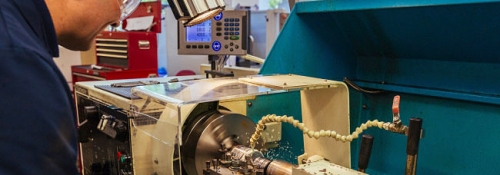 Student and staff engineering bay
Student and staff engineering bay
See what tools are available for you in our staff and student workshop
Staff and current students
Technical services information can be found on the Engineering intranet (staff and research postgraduates) and on Blackboard.

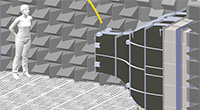 Some of the best and most unique wind tunnel facilities in the country, including an Aeroacoustic wind tunnel, a low-turbulence wind tunnel, a pressure-neutral acoustic wind tunnel for propeller research, a high-speed subsonic and supersonic jet facility, and a large 7’x5’ close-circuit wind tunnel.
Some of the best and most unique wind tunnel facilities in the country, including an Aeroacoustic wind tunnel, a low-turbulence wind tunnel, a pressure-neutral acoustic wind tunnel for propeller research, a high-speed subsonic and supersonic jet facility, and a large 7’x5’ close-circuit wind tunnel. An internationally recognised centre of excellence. More than 3,000 m2 of state-of-the-art specialist workshops, wet labs and two flying arenas with multiple 3D motion capture systems. This unique collaboration harnesses the collective strengths of its university partners,the academic community and the best expertise from industry so the UK can lead the world in modern advanced robotics.
An internationally recognised centre of excellence. More than 3,000 m2 of state-of-the-art specialist workshops, wet labs and two flying arenas with multiple 3D motion capture systems. This unique collaboration harnesses the collective strengths of its university partners,the academic community and the best expertise from industry so the UK can lead the world in modern advanced robotics.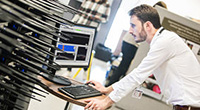 The latest hardware and measurement facilities including an anechoic chamber; analogue (40GHz, two channel) wafer probing facility connected to a 65GHz VNA; computer cluster; RF and wireless instrumentation; ultra high bandwidth, real-time oscilloscope and logic analyser; Medav multi-element wideband channel sounder with full remote MIMO operation and a MIMO test-bed and channel emulation facility.
The latest hardware and measurement facilities including an anechoic chamber; analogue (40GHz, two channel) wafer probing facility connected to a 65GHz VNA; computer cluster; RF and wireless instrumentation; ultra high bandwidth, real-time oscilloscope and logic analyser; Medav multi-element wideband channel sounder with full remote MIMO operation and a MIMO test-bed and channel emulation facility. The Faculty's full range of top class facilities include composites-specific equipment for mechanical and high strain rate testing, manufacturing research, visualisation, composite processing and the measurement of process critical properties. In addition to our degree programmes, we also offer composite materials training and consultancy to our industrial partners.
The Faculty's full range of top class facilities include composites-specific equipment for mechanical and high strain rate testing, manufacturing research, visualisation, composite processing and the measurement of process critical properties. In addition to our degree programmes, we also offer composite materials training and consultancy to our industrial partners.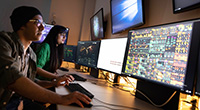 The Bristol Cyber Security Group's state-of-the-art large scale testbed provides a realistic environment for our research into cyber-physical systems security. It has been built from the ground up, based on extensive past experience of building ICS security testbeds and input from industry partners.
The Bristol Cyber Security Group's state-of-the-art large scale testbed provides a realistic environment for our research into cyber-physical systems security. It has been built from the ground up, based on extensive past experience of building ICS security testbeds and input from industry partners.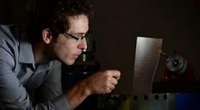 The Dynamics laboratory and the Model Validation Facility (MVF) are part of the Faculty's advanced dynamic engineering facilities. Both laboratories have leading cutting-edge measurement and testing technologies. They serve a large group of researchers with a focus on aspects of dynamics, such as composites and nonlinear vibrations of mechanical structures.
The Dynamics laboratory and the Model Validation Facility (MVF) are part of the Faculty's advanced dynamic engineering facilities. Both laboratories have leading cutting-edge measurement and testing technologies. They serve a large group of researchers with a focus on aspects of dynamics, such as composites and nonlinear vibrations of mechanical structures. The largest earthquake engineering facility in the UK and one of the larger ones in Europe. The main piece of equipment is the six axis shaking table. We welcome enquiries from industrialists interested in our test facilities. Access if offered through a University-owned company: Bristol Earthquake and Engineering Laboratory Limited ("BEELAB").
The largest earthquake engineering facility in the UK and one of the larger ones in Europe. The main piece of equipment is the six axis shaking table. We welcome enquiries from industrialists interested in our test facilities. Access if offered through a University-owned company: Bristol Earthquake and Engineering Laboratory Limited ("BEELAB").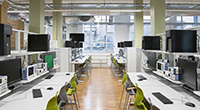
 An open-plan engineering teaching laboratory for 200 students in one group or multiple simultaneous classes and workshops. The flexible layout increases hands-on teaching and learning opportunities.
An open-plan engineering teaching laboratory for 200 students in one group or multiple simultaneous classes and workshops. The flexible layout increases hands-on teaching and learning opportunities. The geomechanics and geotechnics laboratories are temperature controlled facilities with equipment for research, project work and class teaching in fundamental geomechanics.
The geomechanics and geotechnics laboratories are temperature controlled facilities with equipment for research, project work and class teaching in fundamental geomechanics. The Hack Space is a fantastic 103m2 creative co-working area, designed with our students as a space for hacking, making and crafting. Located on the ground floor of the Merchant Venturers Building, its ethos is one of experimentation and collaboration. It is a safe space where all engineering students can test new ideas and make mistakes!
The Hack Space is a fantastic 103m2 creative co-working area, designed with our students as a space for hacking, making and crafting. Located on the ground floor of the Merchant Venturers Building, its ethos is one of experimentation and collaboration. It is a safe space where all engineering students can test new ideas and make mistakes! Composites enable everyday lives. Lightweight, strong, smart materials make better, more sustainable products.
Composites enable everyday lives. Lightweight, strong, smart materials make better, more sustainable products.  The non-destructive testing laboratory supports research into ultrasonics and acoustics. Key areas are phased array imaging, materials characterisation (e.g. nonlinear ultrasound), structural health monitoring, composites and ultrasonic particle manipulation.
The non-destructive testing laboratory supports research into ultrasonics and acoustics. Key areas are phased array imaging, materials characterisation (e.g. nonlinear ultrasound), structural health monitoring, composites and ultrasonic particle manipulation.  The NSQI centre houses low noise laboratories (LNL), a suite of purpose-built, low-vibration research spaces and among the quietest laboratories in the world. With additional radio frequency and temperature stability measures, they are ideal for experiments where background interference is a barrier to sensitive research. The related Bristol
The NSQI centre houses low noise laboratories (LNL), a suite of purpose-built, low-vibration research spaces and among the quietest laboratories in the world. With additional radio frequency and temperature stability measures, they are ideal for experiments where background interference is a barrier to sensitive research. The related Bristol  One of the UK's most renowned Information and Communications Technology (ICT) research centres which addresses grand societal and industrial challenges. Experts in 5G radio/wireless, optical communications and networks fuse research expertise and innovation in areas such as: IoT, future transport networks, smart cities, machine learning and AI. An unique combination of end-to-end network design and optimisation that impacts regional, national and global ICT innovations.
One of the UK's most renowned Information and Communications Technology (ICT) research centres which addresses grand societal and industrial challenges. Experts in 5G radio/wireless, optical communications and networks fuse research expertise and innovation in areas such as: IoT, future transport networks, smart cities, machine learning and AI. An unique combination of end-to-end network design and optimisation that impacts regional, national and global ICT innovations. A state-of-the-art facility for research into the structural-geotechnical boundary. It supports the UKCRIC mission to underpin renewal, sustainment and infrastructure improvement in the UK and beyond. Primarily supported by the Earthquake and Geotechnical Research Group, SoFSI's size and scale means a wide variety of academic and commercial research could be supported.
A state-of-the-art facility for research into the structural-geotechnical boundary. It supports the UKCRIC mission to underpin renewal, sustainment and infrastructure improvement in the UK and beyond. Primarily supported by the Earthquake and Geotechnical Research Group, SoFSI's size and scale means a wide variety of academic and commercial research could be supported. The VI lab's innovative, collaborative and interdisciplinary research results in world-leading technology in the areas of computer vision, image and video communications, content analysis and distributed sensor systems.
The VI lab's innovative, collaborative and interdisciplinary research results in world-leading technology in the areas of computer vision, image and video communications, content analysis and distributed sensor systems. A key part of the University's aerodynamic and aeroacoustics facilities, the Hele-Shaw laboratory's new Boundary Layer Wind Tunnel with its modular construction was designed for multi-purpose applications. The 30m long wind tunnel has nine axial fans that can be configured for partial or full operation, allowing a steady flow velocity between 2m/s and 35m/s with very low turbulence intensity. At c 18m, the test section is one of the longest in the UK and can produce a boundary layer over 25cm thick. The laboratory also has specialist rigs used to teach fluid mechanics and is used for related research projects.
A key part of the University's aerodynamic and aeroacoustics facilities, the Hele-Shaw laboratory's new Boundary Layer Wind Tunnel with its modular construction was designed for multi-purpose applications. The 30m long wind tunnel has nine axial fans that can be configured for partial or full operation, allowing a steady flow velocity between 2m/s and 35m/s with very low turbulence intensity. At c 18m, the test section is one of the longest in the UK and can produce a boundary layer over 25cm thick. The laboratory also has specialist rigs used to teach fluid mechanics and is used for related research projects. Our staff and students benefit from excellent workshop facilities. They are also able to get significant components made here on site for projects. The facilities and equipment includes Computer Numerical Control (CNC) machines, lathes, Electro Discharge Machines (EDMs) and rapid prototype machines.
Our staff and students benefit from excellent workshop facilities. They are also able to get significant components made here on site for projects. The facilities and equipment includes Computer Numerical Control (CNC) machines, lathes, Electro Discharge Machines (EDMs) and rapid prototype machines.